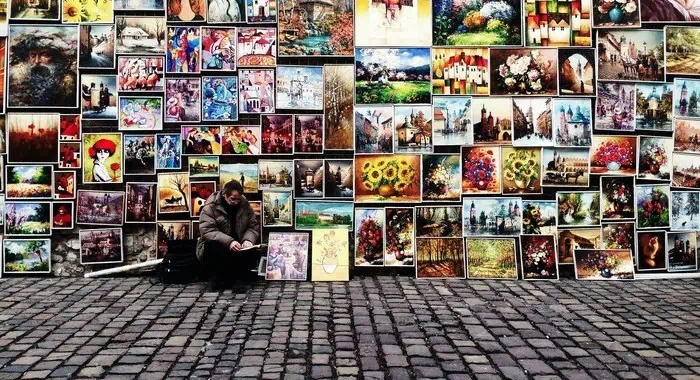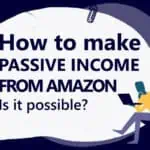What you’ll learn
Yes.
I still go to trade shows.
I’m afraid to look at my calendar because 2019 is packed. My wife and I definitely feel overwhelmed already from all the upcoming schedules and events.
But I do look forward to seeing how everything pans out when I review 2019 a few years later.
Trade shows? Eww…

First, when it comes to trade shows, people tend to think:
- trade shows are useless
- they are behind trends
- waste of time and money
I attend shows for 3 main reasons which I’ll go into deeper detail.
#1 To sell our product
When we get to sell it physically, we find out which products work, what people respond to, and getting rid of excess or dead inventory.
#2 Scouting
I’ve mentioned this before but I don’t rely on scouting software for new product ideas. With so many armchair Amazon sellers, finding product ideas outside of the usual research software has been an advantage that continues to work for us.
#3 Networking
Most business owners at the show all go through the same thing. It’s a great way to pick up knowledge bombs from others and share feedback and marketing ideas.
Helping a new entrepreneur is also rewarding.
1. Selling our product

A lot of good things come from selling at shows.
It’s an opportunity to:
- get in front of a real audience
- identify who your true target audience is
- gather live feedback from buyers
- craft your pitch
- test what works and what doesn’t
You can do all this from the comfort of your office or home, but there’s a lot of value in doing it in person.
It’s also faster and cheaper.
You could spend weeks, and hundreds of dollars doing online surveys, using custom software, sending out emails, split testing pages and headlines, and paying for ads to drive leads before you have a big enough sample size to lock down a solid result or conclusion.
But trade shows provide the opportunity to do all of the above in one setting. And within a day, you usually get the answer.
I’m not referring to big trade shows like the annual Chicago homeware show.
A couple of years back, we did a local Christmas event. Our friend was begging us to sell our stuff at her event. It was only $30 to get a table. The show/bazaar was held at her school on a Saturday from 10am-3pm.
At this little event, we figured we would work on our pitch and see what works. Didn’t expect any sales at all. Just doing it to help a friend.
But we sold over $600 in that lazy afternoon.
But the point is once I got my pitch going and was able to convert browsers into buyers, I applied the catch phrases and keywords that triggered a reaction – into my Amazon listings.
These are keywords that do not show up on google search volume, Amazon search or any SEO software.
After we updated our listing with these phrases, it started to have a big effect. We uncovered the exact pain point keyword by listening in person to what the customer was looking for and asking questions about.
Real time feedback.
Trade shows are also good places to get rid of excess or dead inventory AND do some local marketing and get the product in front of people.
With our dud products, we offer it as a freebie to incentive people to buy. We were going to throw it out anyways. Might as well use it as a promotion to increase conversion.
With each sale, we also mention our website and where they can find us. An effort to drive people to our site for future repeat purchases. Last year we started to see good results and diversifying away from Amazon is always a good idea.
2. Scouting for products

At our worst show ever, we sold $12 all day.
- 10 hours
- 2 people working
- $12 total sales
Not going to lie, it was draining and demoralizing, but we found our best selling product.
Here’s how it happened.
The guy next to our booth was crushing it.
He easily made $15-20k during this show. But thanks to him, and our non-existent sales, I got to watch his pitch, his presentation, his craft and pick his brain.
The way he presents his products, the problem he makes you visualize, the dream he lays out and the solution to the problem.
We now try to create out listings, website, videos and marketing material in this way.
Don’t sell the steak. Sell the sizzle.
His presentation was so good that my wife fell for it and couldn’t contain her excitement at spending $2k to buy his stuff.
As he is packing up the goods for us, he throws in a small sample of a product to keep his products in top condition.
Again, that show was our worst ever.
But that little free sample – it worked so good when we tried it that we were literally blown away. Forget the expensive $2,000 item. We were ecstatic about that cheap little freebie.
We had to find a way to sell it.
After digging around and making numerous calls, we found the manufacturer was able to open a wholesale account.
To this day, it is still our #1 seller and getting stronger year over year, turning over thousands every month with little competition.
During the show, it was draining and annoying not getting any sales. But in hindsight, it was our biggest success ever.
This is an example of scouting luck, but hey, luck comes to those who try.
Our other products were also found in person. If we see a booth that is getting huge amounts of traffic, we analyze what the product is and why. If the product is good and fits within our scope, we improve on it and make our custom version.
Seeing as how all the low-class Amazon sellers are short-term motivated and copycats, they lag the market significantly.
While these sellers may get to market quickly with the exact same product, it’s not worth playing the same game.
There are so many shows and fairs throughout the year. Check out your local calendars to see what’s around your area, or if you have the time and budget, make an international trip. International scouting has been one of our biggest winners throughout the years.
3. Networking

Trade shows are some of the best ways to network with like-minded people.
We all go through, or have been through similar experiences and people are more open to answering questions when you talk to them in person.
If you’ve ever been to a networking event, it’s miserable. People aren’t there to network. They are there to sell.
With shows however, people are there with the same objective and are open to sharing ideas, their stories about business and life.
We found one of our best distributors from a show. He noticed that we were coming year after year, yet didn’t see us outside of our main city. He wanted to take on the product for his portfolio.
Most people at the shows also don’t know how to sell on Amazon or how to do it properly. So if you are a consultant or agency, it’s easy to pick up new business.
Many different ways to approach it. It’s the mentality that counts.
If you believe trade shows are for suckers or it’s old school and there’s nothing to gain from it, that’s the result you’ll get.
Downside to trade shows?
The biggest downside is:
- time
- energy
Shows are not easy if you exhibit.
I have so much respect for people who do it all year around.
But each time we’ve put in the effort, it has paid off.
You can start easily and just visit shows and fairs around you that are easy to get to. If you are a new seller, it’s a good way to be different and build up experience without a big investment.
Summary
Trade shows don’t suck.
Visit one, or sell at a local one yourself and it will make you are a larger seller on Amazon.
You’ll get what you put into it.
Don’t just be an armchair Amazon seller.
Be different.
Comments
Related Posts

10 Profitable Product Categories for Amazon Affiliates 2025
What you’ll learn Amazon is a favorite for experienced and…

Unlock the Secret to a Profitable Automated Amazon Store: How to Build a Hands-Free Income Stream
Ever dreamed of running a profitable Amazon business while sipping…

Master Amazon New Restricted Keywords: A Seller’s Guide to Success
Changes to Amazon’s restricted keywords list have taken a lot…





Leave a Reply